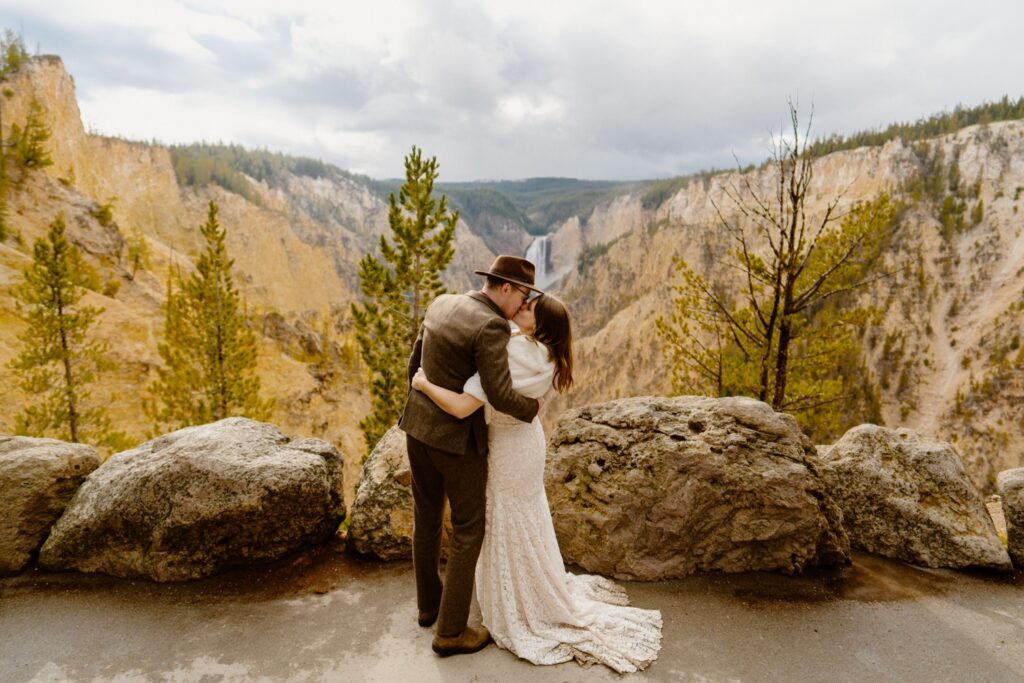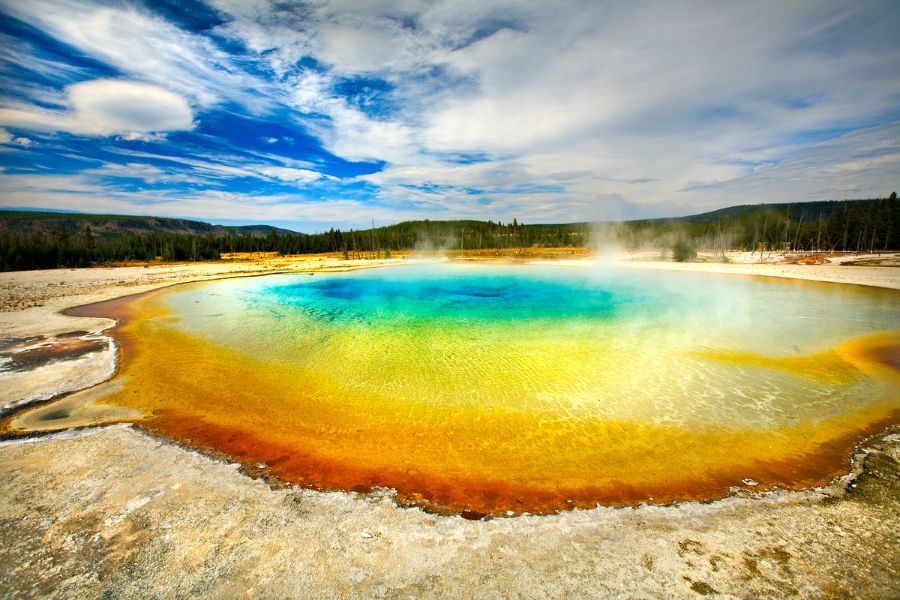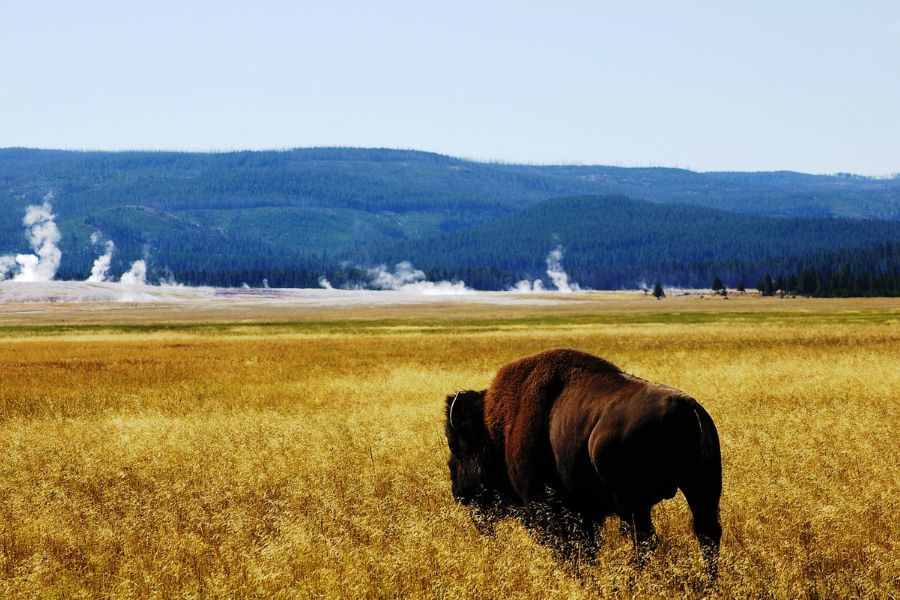Planning a wedding is such an exciting and memorable time in life and the venue you choose sets the stage for your big day. For couples who love the great outdoors, Yellowstone National Park may seem like the ultimate wedding location. With its breathtaking landscapes, abundant wildlife, and history, Yellowstone offers a stunning backdrop for any ceremony. But as with any wedding venue, there are both upsides and downsides. Here’s what you should know if you’re considering tying the knot in this iconic park.
Pros
Unbeatable Scenery
Yellowstone is famous for its jaw-dropping landscapes, from geysers and hot springs to mountain vistas and clear, starry nights. Getting married while having this powerful connection with the environment can bring an added spiritual dimension to your ceremony.
Smaller Guest List
The remoteness and restrictions could naturally limit your guest list, making for a more intimate ceremony. For some, this is ideal, as it allows you to focus on close family and friends.
Unique Experience
Getting married in Yellowstone isn’t just a ceremony; it’s an experience. You and your guests will love the chance to explore the park, and you can even invite your guests to extend the celebration into a mini-vacation or use it as your mini-honeymoon.
Personalized Ceremonies
Since you’re not restricted to a traditional venue, you have more freedom to personalize your ceremony. Whether you want to exchange vows at sunrise or include outdoor activities like a post-ceremony hike or horseback riding or snowmobiling, the sky’s the limit.
Off-the-Beaten-Path Locations
Yellowstone is vast, providing an opportunity to find more secluded spots that aren’t tourist magnets. This means your ceremony can be both scenic and private.
Cost-Effectiveness
While you’ll need to pay for a permit and adhere to specific guidelines, a national park wedding can be more affordable than a traditional venue, especially if you keep it simple.
Environmental Impact
Outdoor weddings, especially in a pristine setting like Yellowstone, often have a smaller carbon footprint compared to traditional indoor venues. You’re also supporting the National Park Service by paying for your permit.
Memorable
Your Yellowstone wedding will be one for the books. The unique setting will make your special day even more unforgettable for you and your guests. The possibilities are endless to build the day in a way that reflects you as a couple perfectly.
Cons
Permits and Regulations
You’ll need a special use permit to get married in Yellowstone, which means dealing with paperwork and adhering to numerous rules and regulations set by the National Park Service. The permits you’ll need are the Wedding Special Use Permit and a Photographer Commercial Use Authorization and your Marriage License. Your wedding photographer should be informed and be able to assist with getting the permits.
Travel
The best airport to fly to for your Yellowstone wedding is the Bozeman-Yellowstone Int’l Airport (BZN). It’s located just outside of Bozeman, MT and is about 1.5 hours away from both the North (Gardiner) and West (West Yellowstone) entrances. Rental cars are available at the airport and I highly recommend booking your rental vehicle as soon as possible, especially if you’re traveling here during the popular summer months. If you’re getting married in the off season, keep in mind that some of the park roads close from October 31st through April/May and inclement weather (cold & snow) is likely to occur.
Limited Amenities
Don’t expect the conveniences of a traditional wedding venue. Restrooms, electricity, food, and other amenities will be limited or non-existent, depending on your location within the park. If you plan to have a reception, you’ll likely need to move the party out of the park, as there are restrictions on food and alcohol. You may consider a reception in places within reasonable distances like Chico Hot Springs, Union Pacific Dining Lodge, or even a restaurant in Red Lodge, Livingston, Gardiner, or West Yellowstone.
Weather Risks
Montana’s weather is unpredictable, especially in the mountains. Thunder/lightening, rain, snow, or even summer heat can create some challenges for your ceremony, so you’ll need a solid backup plan.
Seasonal Restrictions
The best times to have a Yellowstone wedding are late spring through early fall. Winter weddings are possible but bring additional challenges like road closures and extreme cold.
Difficulty in Organizing Vendors
You’ll likely need to bring in your own vendors for things like photography, flowers, and even seating for those who might need it. Don’t be afraid of the logistics though, it’s likely you won’t need much beyond a photographer and bouquet for your ceremony.
Guest Accessibility
While Yellowstone is beautiful, it’s also remote. This might pose challenges for guests who are elderly or have mobility issues, not to mention the potential for lodging limitations.
Final Thoughts
A Yellowstone wedding requires a little bit of logistical gymnastics, but the payoff can be enormous. The blend of natural beauty, intimacy, and a unique experience is hard to replicate. If you’re willing to navigate the permitting process and make some concessions on amenities, this iconic national park can serve as a stunning backdrop to your special day. Just be sure to weigh the pros and cons carefully so you know exactly what you’re getting into. With proper planning, your Yellowstone wedding could be the stuff of legends.





